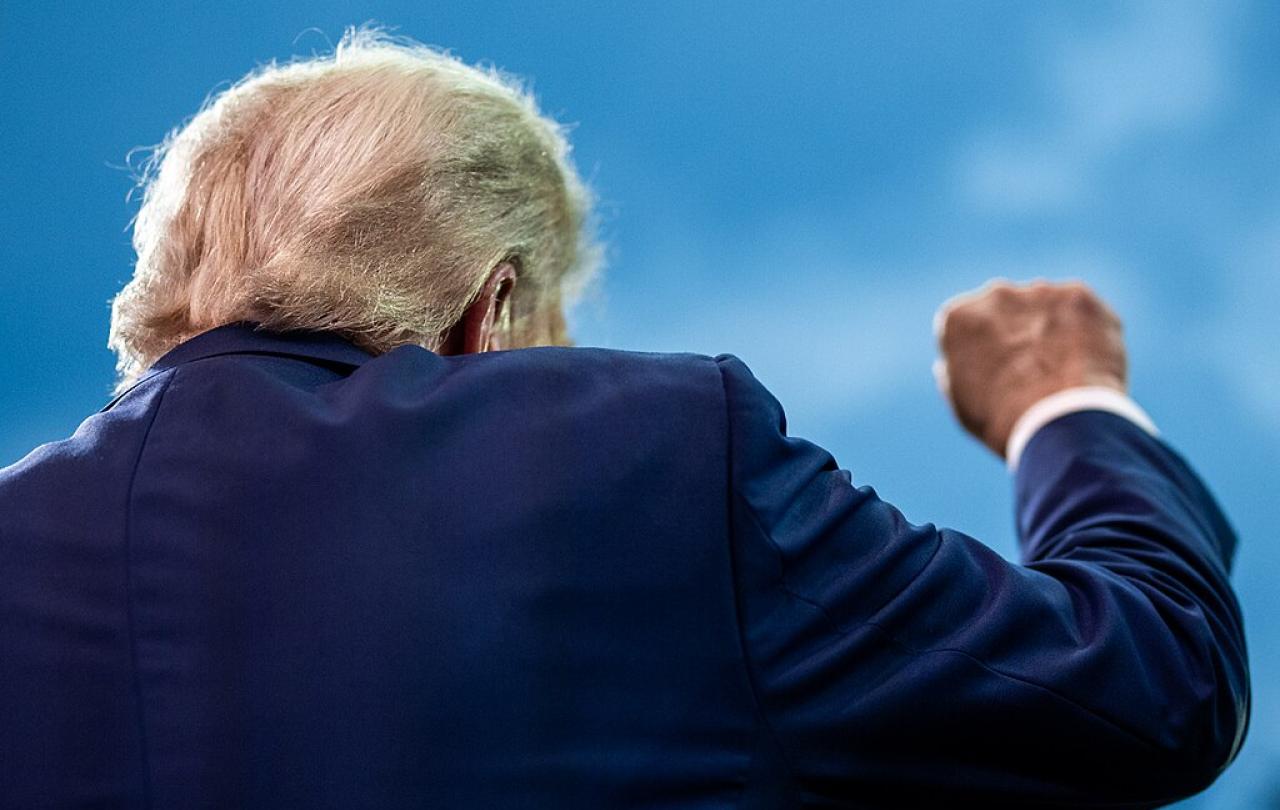
What principles will shape your vote this Thursday? What or who will primarily guide your decision in the ballot booth? Podcaster and former political advisor Alastair Campbell’s old adage “we don’t do God” suggests that religion and politics don’t mix. Yet some of the most important movements for social and political justice in modern history had Christians at their heart. Think Wilberforce, Fry, Bonhoeffer, Martin Luther King Jr., Desmond Tutu, or the lesser-known but worth-a-google, Melanesian Brotherhood.
What wisdom might the Christian faith have to offer when thinking, not just about this election, but how to approach politics in general? Like lions on the England football shirt, all good things come in threes– so, here are three Christian perspectives that can inform political engagement.
First, earthly kingdoms are penultimate. God’s kingdom is ultimate.
Perhaps the moment that Jesus is drawn most explicitly to comment on the politics of his day, was when he was asked about paying taxes. “Is it lawful to pay taxes to the emperor, or not?” Given how frustrating it can be watching politicians avoid responding directly to any question posed, we might sympathise with those who wanted a direct answer here. But for Jesus, to say yes would position him as a traitor to the Jewish people who wanted to resist and subvert the authority of the Roman Empire. To say no, however, would be to signal revolutionary intentions to lead a rebellion against the occupying Roman force.
Set within this political trap, Jesus responds by asking for a coin and turns the tables by asking, “whose face is on this coin?” “Caesar’s,” comes the reply. “Then give to the emperor what belongs to him,” says Jesus. Yet, before we allow this response to justify opting out of political practice or hallow every existing ruling power, Jesus continues: “But give to God what belongs to God.” And what belongs to God, we ask? Well, as the writer of the ancient Psalms poetry put it, “the earth is the Lord’s and all that is in it.” Nothing short of the whole universe and beyond belongs to God, the creator of heaven and earth. So, in taking the coin, Jesus is not giving a blanket affirmation of Caesar’s rule, but challenges each and every earthly kingdom by relativising it in the light of God’s eternal kingdom. What has sustained so many Christians in challenging and renewing the political context of their day is the trust that before, behind, and beyond the rising and falling of each earthly authority stands God’s eternal kingdom. This kingdom is not in competition with the kingdoms of earth, vying to secure its own territory, but is a kingdom inaugurated by a king who wears a crown of thorns, forgives his executioners, and is raised from the dead to proclaim, “peace be with you!” The call to follow Christ within the political is to retain the perspective of this eternal life.
Second, politics needs a perspective beyond personal interest.
Holding an eternal perspective, however, is not to say this world or politics does not matter. In contrast, justice, compassion, and seeking a world as God intends it to be matters precisely because of eternity. How we live here and now has eternal significance. How we treat one another and care for all of creation has eternal significance. What belongs to God? We all do. Each person is made in God’s image. As a coin bears the image of its ruler, so we are marked by the image of God. When we consider our political responsibility, therefore, we must do so not with our own cares or concerns alone, or even primarily. Rather, we should ask what political responsibility we have towards others? How do my political decisions or actions impact my neighbour, both local and global– particularly those on the underside of the political power of the day? As the Archbishop of York, Stephen Cotterill, recently shared, “as a Christian, I’m hoping and I’m praying, that when I vote, when you vote, we won’t be placing our vote according to what’s best for us, but for what’s going to be best for God’s world.” If God’s power is displayed most fully in Christ who came, not to be served, but to serve, giving his life for the sake of the world, then political power cannot be a means for securing our own advantage over and against others. A Christian approach to politics recognises that my flourishing is bound up and inseparable from the flourishing of all others.
Third, let’s disagree well.
However, even if we could agree on the importance of politics beyond personal interest, we won’t all agree on what this looks like in practice. For instance, whilst two people might agree on the need to ensure a welfare safety net for the most deprived in society, their perspectives on how best to achieve this might differ greatly. Christians are not immune from such disagreements and (not that you would know it from the promises of each political party) no political system can deliver heaven on earth. How then are we to reconcile our political differences?
Returning to the theme of belonging and image bearing, the church bears the image of Christ. The church is the Body of Christ, comprised of many different members yet united, as one body. One of Jesus’ final acts on earth was to pray that the church would be one in the same way that God, the Father, the Son, and the Holy Spirit are one. Unity in difference. This image offers a counterweight to how political differences are played out across the news and social media platforms. Here, to vote or think differently is often to become an enemy, or even to forfeit one’s belonging as a bearer of God’s image, another person worthy of inestimable dignity and value.
Belonging to Christ, however, is to know that belonging together runs deeper than divisions of race, gender, societal status, and political tribalism. It is to trust that my sister or brother in Christ, with whom I might strongly disagree politically, is a gift to me, a showing of Christ, that I would otherwise fail to see on my own. If Christ really is the way, the truth, and the life, then the truth is beyond my final possession of it. This does not mean indifference or relativism. As the former Archbishop of Canterbury, Rowan Williams, writes, “unity is Christ-shaped, or it is empty.” But if we can recognise one another placing our penultimate political judgements under the same scrutiny of Christ’s coming kingdom, then even in our disagreements, the church, bearing together in costly communion, reveals a belonging together that anticipates the ultimate: a world where things can only get better.





